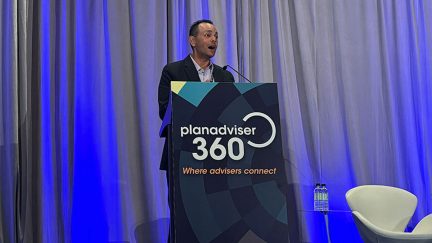Never miss a story — sign up for PLANADVISER newsletters to keep up on the latest retirement plan adviser news.
Retirement Shortfalls and Cooler Markets
A survey from the CFA Institute and Mercer finds a lack of retirement income could put a drag on capital markets over the five years (and likely longer), driving financial stress for individuals and entire economies.
The 2015 Global Market Sentiment Survey asked CFA Institute members to identify “the most underestimated risk” that could negatively impact global capital markets in the next five years. Fully 20% pointed to the “the impact from the demographic trends of aging populations,” and another 14% designated “pension plan shortfalls and low levels of retirement savings” as leading threats to global investors.
Mercer and the CFA Institute conclude “quite simply, retirement is an issue too big not to address.”
Beyond dragging down quality of life at the upper end of the age scale—insufficient retirement savings may lead to lower demand and economic output in general from economies across the globe. One positive force at work is the increasing interest of Millennials in investing and saving, especially considering Millennials are the first U.S. generation to match the Boomers’ size. But with persistently high global unemployment and stubbornly flat wages, younger workers in the U.S. and abroad face some concerning headwinds.
“The major causes of this demographic shift are declining birth rates and increasing longevity,” says Ashvin Vibhakar, a senior adviser at the CFA Institute who helped lead development of the Mercer/CFA Institute analysis. He tells PLANADVISER that, in short, a growing proportion of almost every country’s population is entering retirement and therefore not directly contributing to their respective economy’s production. “At the same time, most retirees are looking to maintain their pre-retirement living standard and to have access to quality medical and aged care services in their later years.”
NEXT: A discouraging mix
It’s not a good mix, but the report also finds there are potential solutions to the global retirement problem. First and foremost, government officials should give up the notion that a single system—either across countries or within one country—will be able to pick up the massive amount of retirement income slack. In the U.S. this debate often plays out along the lines of defined contribution (DC) versus defined benefit (DB).
Which will lead us to a secure retirement future? Vibhakar says neither—at least not individually. The report argues both systems will have to be strengthened and supported, and combined with other key sources of potential retirement income, to drive better retirement readiness.
Vibhakar notes a more ideal system draws on three pillars. Pillar one is a mandatory participation, publicly managed and tax-financed pension system, he explains. Pillar two is a mandatory privately managed workplace benefit, and pillar three is voluntary personal savings funded beyond the private workplace benefit.
In some respects this is already the system in place in the U.S., Vibhakar observes. People are generally required to contribute to the Social Security system, which functions as a tax-financed pension system. But, problematically, neither the defined benefit nor defined contribution systems are mandatory, nor do they extend widely enough to ensure everyone gets an equitable shot at a successful retirement. Vibhakar says he commonly sees figures showing upwards of 40% of private sector workers still lack access to an institutional workplace savings options.
NEXT: From ideal to real
“The government must establish clear objectives for the whole retirement system, including the complementary roles of each pillar,” he says. Especially important is to incorporate the provision of a minimum income to alleviate poverty among the aged population, along with insuring there is sufficient competition between investment and administration services providers, in the interest of keeping down costs.
One other complicating factor in the U.S. is the bullheadedness of the national identity. In other words, he says, “here in the United States we don’t like to be told what to do or how to behave.” This holds true across so many aspects of our society that it’s no surprise the U.S. has not gone the way of Australia or other modern economies to implement a mandatory retirement savings system for all workers. “Even seeing the pretty impressive statistics coming out of Australia probably isn’t going to change this any time soon,” he remarks.
That’s why the path forward in the U.S. is going to rely heavily on things like automatic enrollment and heavier use of defaults.
“Default is very different from mandatory,” Vibhakar concludes. “It’s very hard to see a full-fledged mandatory system coming into the picture here in the near future, but we’ve already seen a lot of success getting people saving through default features. Greater use of defaults is essential to improving our outlook in the U.S.”
The full report is available for download here.
You Might Also Like:

Holistic Planning is Key to Navigating Retirement Income Challenges

2025 Retirement Outlook: Tax Changes, Cryptocurrency Trends and Litigation Reforms



